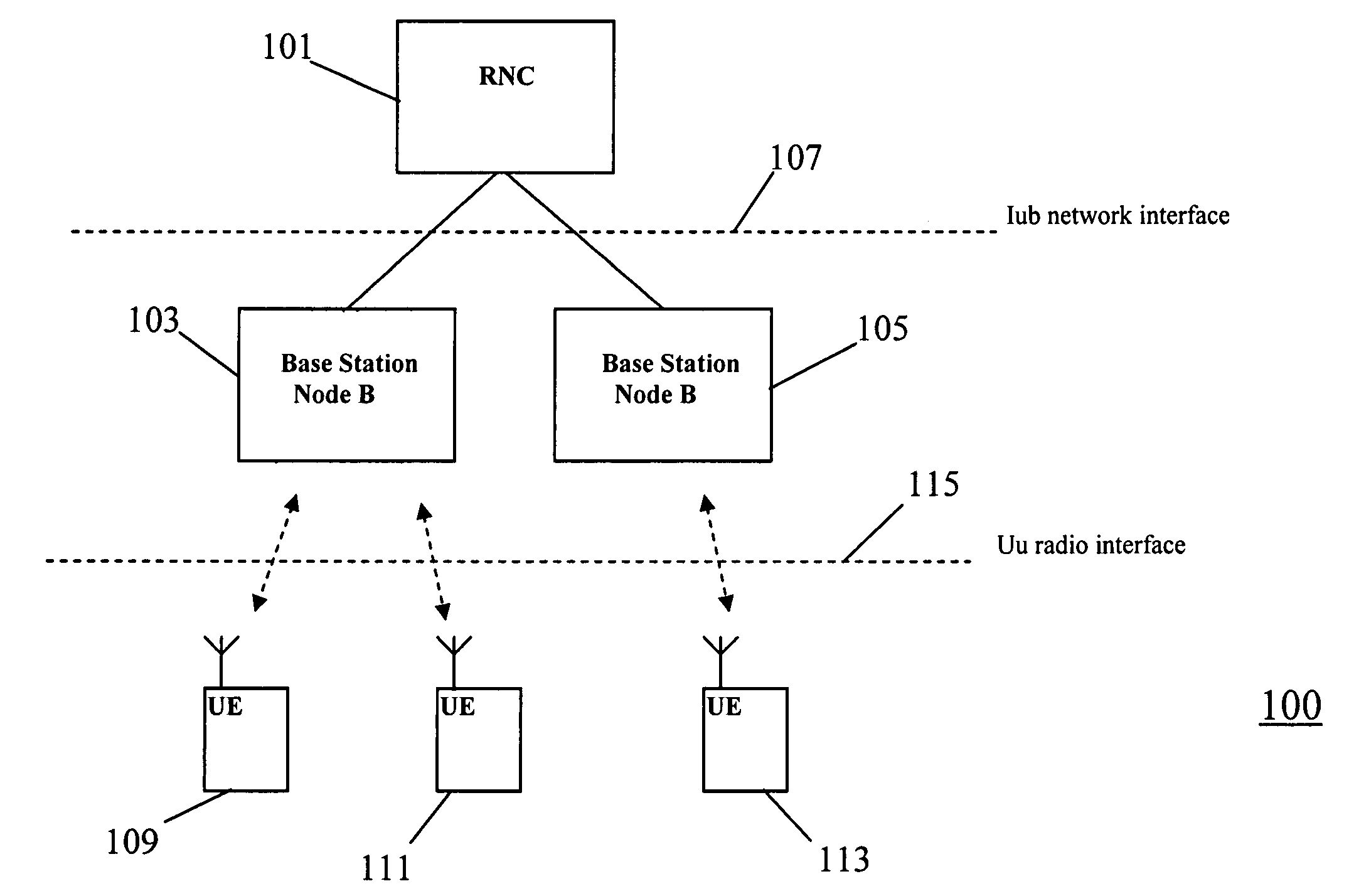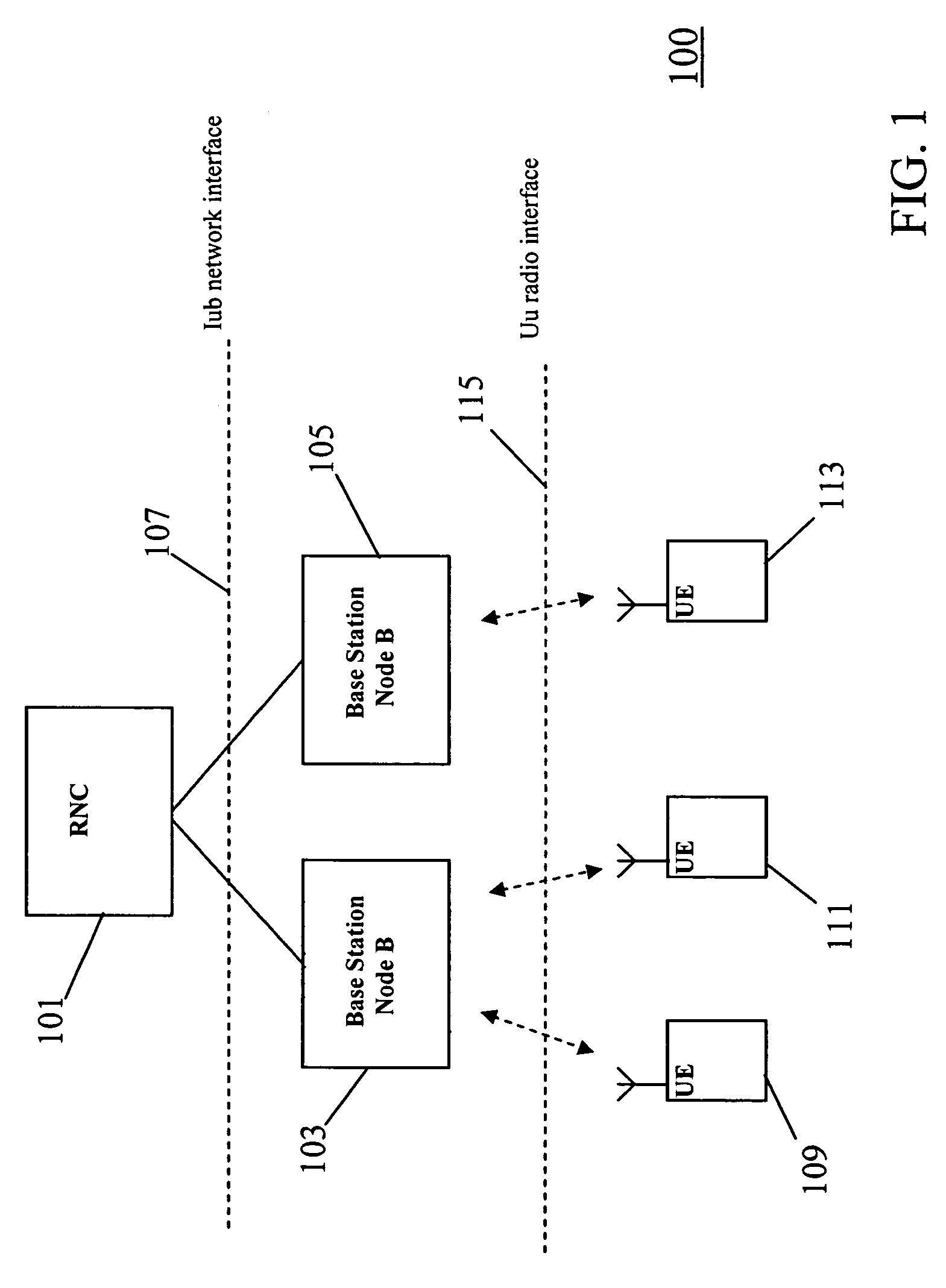Retransmission scheme in a cellular communication system
a cellular communication system and retransmission scheme technology, applied in the direction of channel coding adaptation, power management, transmission monitoring, etc., can solve the problems of increasing other delays, relatively high latency, and inability to achieve optimal performance, so as to reduce one delay, alleviate one delay, the effect of eliminating on
- Summary
- Abstract
- Description
- Claims
- Application Information
AI Technical Summary
Benefits of technology
Problems solved by technology
Method used
Image
Examples
Embodiment Construction
[0085] The following description focuses on an embodiment of the invention applicable to a UMTS cellular communication system and in particular to an application for a HSDPA or HSUPA service. However, it will be appreciated that the invention is not limited to this application but may be applied to many other cellular communication systems and / or services.
[0086]FIG. 1 is an illustration of part of a UMTS cellular communication system 100 in accordance with embodiments of the invention.
[0087]FIG. 1 illustrates a Radio Network Controller (RNC) 101 which is connected to two base stations 103, 105 which are known as Node Bs in a UMTS cellular communication system. The interface between the RNC 101 and the base stations 103, 105 are known as the Iub interface 107. The base stations 103, 105 support a number of remote units 109, 111, 113 (or user equipment). For clarity and brevity, FIG. 1 illustrates two remote units 109, 111 being supported by the first base station 103 and one remote...
PUM
 Login to View More
Login to View More Abstract
Description
Claims
Application Information
 Login to View More
Login to View More - R&D
- Intellectual Property
- Life Sciences
- Materials
- Tech Scout
- Unparalleled Data Quality
- Higher Quality Content
- 60% Fewer Hallucinations
Browse by: Latest US Patents, China's latest patents, Technical Efficacy Thesaurus, Application Domain, Technology Topic, Popular Technical Reports.
© 2025 PatSnap. All rights reserved.Legal|Privacy policy|Modern Slavery Act Transparency Statement|Sitemap|About US| Contact US: help@patsnap.com



